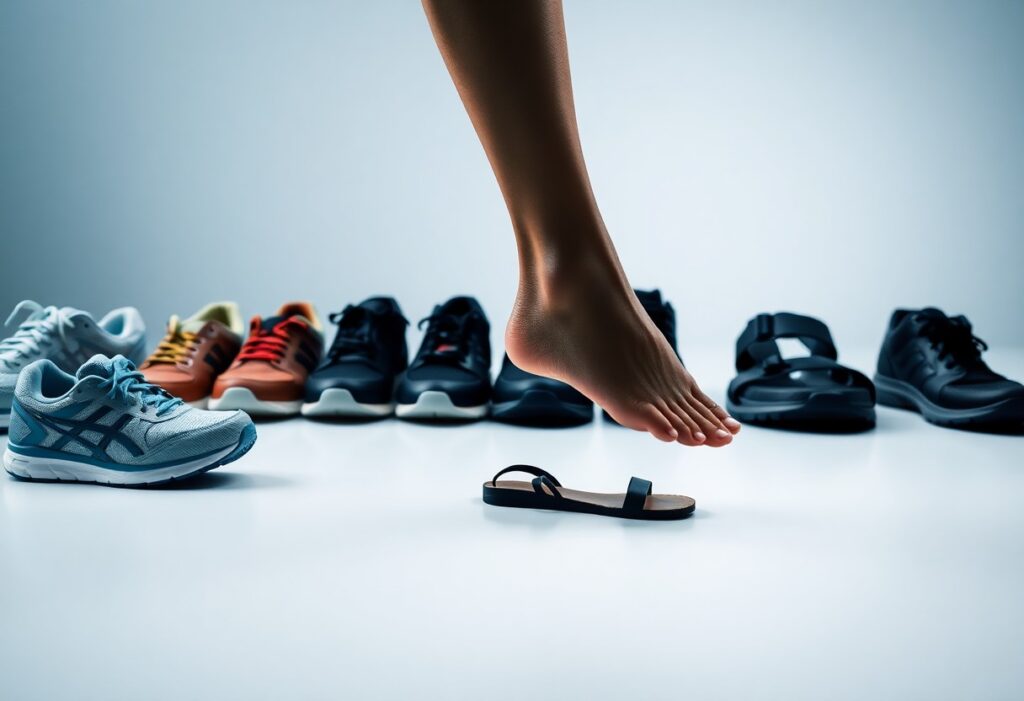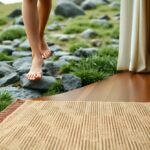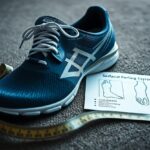
When considering your choice of footwear, it’s vital to recognize that the type of shoes you wear can greatly influence your foot health. While many people assume that shoes with more cushioning and support are the best options for alleviating foot discomfort, this may not always be the case. According to Dr. Alissa Kuizinas, a Massachusetts-based podiatrist, opting for barefoot shoes or minimalistic shoes could lead to stronger, healthier feet. By choosing footwear that allows your feet to engage naturally with the ground, you can significantly reduce the risk of developing foot-related issues and promote overall wellness in your feet.
Discover the Hidden Dangers of Traditional Footwear
Traditional shoes may provide temporary relief from foot pain, but they can often exacerbate existing conditions and create new problems, as highlighted by Dr. Alissa Kuizinas. She points out that the massive $133 billion shoe industry tends to prioritize style and profit over genuine foot health, resulting in shoe designs that can restrict and weaken your feet over time. This dependence on conventional footwear can create a vicious cycle that ultimately undermines your foot health and overall mobility.
Unveiling the Shoe Industry's Misguided Solutions for Foot Health
The fundamental issue lies in the shoe industry’s flawed approach to foot health, which often emphasizes the inclusion of excessive cushioning, support, and rigid construction in their designs without addressing the root causes of discomfort. This misguided strategy can foster an unhealthy reliance on shoes that may actually compromise your foot health over time, leading to a variety of complications that could have been easily avoided with the right footwear choices.
Analyzing the Design Flaws of Conventional Shoes
Common designs in traditional footwear frequently showcase narrow toe boxes, rigid soles, and excessive cushioning, which can significantly impede natural foot movement. As Dr. Kuizinas emphasizes, shoes should serve to protect your feet from external factors, rather than suppress their natural functionality. The ideal footwear would prioritize natural foot mechanics and incorporate minimalist features, such as a wide toe box, flexible and flat soles, and reduced cushioning to enhance foot health.
By transitioning to barefoot shoes or minimalistic footwear, you can actively work to strengthen your feet and improve your overall foot health. Dr. Kuizinas promotes the concept of using as little shoe as possible, which allows your feet to function naturally and move unrestricted, an essential aspect of maintaining healthy foot mechanics.
The Essential Importance of Natural Foot Movement for Health
Footwear that limits your foot's freedom of movement can lead to a multitude of foot issues and discomfort. It’s crucial to consider how your shoe choices affect your overall foot health and comfort, as the right footwear can make a significant difference.
Investigating How Shoes Affect Your Foot Mobility
To understand the impact of shoes on your foot's range of motion, it's necessary to analyze the specific design elements and characteristics of your footwear. Traditional shoes often integrate cushioning and support features that can inadvertently hinder your foot's natural mechanics, resulting in weak and dysfunctional feet over time. This restriction can prevent your feet from acquiring the strength and flexibility they need for optimal performance.
Realizing the Benefits of Allowing Natural Foot Mobility
The advantages of permitting your feet to move freely are extensive, as strong feet are foundational to overall foot health. By selecting minimalistic shoes or barefoot footwear, you enable your feet to operate naturally, fostering strength and resilience. Movement is crucial for developing strong feet. When confined by conventional footwear, you risk a range of foot problems and discomfort. In contrast, adopting minimalistic shoes or barefoot alternatives can significantly enhance your foot health by facilitating natural movement and encouraging strength-building. By making informed footwear choices, you can reduce your risk of foot issues and promote overall foot wellness.
Understanding the Value of Functional Footwear for Optimal Health
Gaining a comprehensive understanding of functional footwear is vital, as these shoes place a high priority on both foot health and natural movement. Functional shoes are specifically engineered to allow your feet to function as intended, eliminating the need for excessive support or confinement.
Identifying Functional Shoes and Their Unique Features
Through research and experimentation with various shoe styles, it becomes evident that functional footwear possesses distinctive characteristics, including a wide toe box, flat and flexible soles, and minimal cushioning and support. These attributes empower your feet to move freely and naturally, thereby promoting stronger and more capable foot mechanics.
Enhancing Foot Health Through Functional Shoe Choices
Choosing to wear functional shoes brings numerous benefits, such as increased foot strength, a reduced risk of injury, and improved overall foot health. These shoes enable your feet to function as they were designed to, paving the way for stronger feet and enhanced balance in daily activities. Functional footwear is crafted to support your feet without imposing unnecessary restrictions, allowing them to move and flex naturally. This design philosophy fosters optimal foot health and decreases the likelihood of developing foot ailments. By opting for functional shoes like barefoot shoes or minimalistic options, you actively promote healthy foot function and lower the risk of foot pain and injury. Transitioning to functional footwear may take time and gradual adjustment, but the long-term benefits for your foot health are invaluable.
Recognizing Key Features of Functional Footwear for Foot Wellness
To attain optimal foot health, it's crucial to choose shoes that incorporate specific features. Key attributes to consider include:
- Wide toe box
- Flat and flexible soles
- Minimal cushioning and support
Being aware of these characteristics will significantly assist you in selecting footwear that encourages healthy foot function and support.
The Importance of Wide Toe Boxes and Flexible Soles Explained
A fundamental feature of functional shoes is a wide toe box, allowing your toes to spread naturally. This design helps prevent toe jamming and other discomfort-related concerns that could lead to chronic foot pain.
Understanding the Necessity of Minimal Cushioning and Support
In addition to a wide toe box, functional shoes should also provide minimal cushioning and support. This design element facilitates natural foot movement while strengthening foot muscles, thereby mitigating the risk of foot issues. It is essential to emphasize that minimalistic footwear, including barefoot shoes, can greatly enhance your foot health by allowing your feet to function unimpeded. By choosing shoes with minimal cushioning and support, you can improve muscle strength in your feet and reduce the chances of injuries. This strategic choice not only enhances your overall foot health but also lowers the likelihood of experiencing chronic pain. Therefore, it is advisable to prioritize shoes that enable your feet to move naturally without excessive cushioning or support.
Successfully Transitioning to Functional Footwear for Better Health
Recognizing the significance of functional footwear is the first step; now it's time to embark on your transition. Contrary to popular belief, more cushioning and support do not always equate to better comfort. Instead, you should choose minimalistic shoes or barefoot shoes that encourage your feet's natural functioning.
Practical Tips for a Smooth Transition to Functional Footwear
Despite any doubts, start integrating functional shoes into your daily routine with these practical strategies:
- Begin with short walks and gradually increase the distance
- Select shoes with a wide toe box and flat soles
- Choose minimal cushioning and support
The primary focus is to give your feet ample time to adjust to the new footwear while strengthening the muscles in your feet.
Highlighting the Importance of Patience and Gradual Adjustment
Transitioning to functional footwear requires patience and a methodical approach. Shoes that are excessively minimalist may cause discomfort and pain if your feet are not accustomed to them. Starting slowly is crucial, allowing your feet to acclimatize to the new shoes.
Footwear options like barefoot shoes or minimalistic shoes can provide immense benefits for your foot health; however, it’s essential to introduce them gradually. Overuse or improper sizing can lead to injuries or persistent discomfort. The ultimate aim is to strengthen your foot muscles while enhancing your overall foot health, so patience is key as you navigate this process. The benefits will be substantial, including improved balance, reduced pain, and stronger feet.
Building Strong and Functional Feet Through Proper Footwear Choices
Even in a society where shoes with excessive cushioning and support are commonplace, you can foster strong and functional feet by selecting the right footwear.
Exploring the Impact of Foot Strength on Overall Health and Well-Being
In conjunction with various health factors, foot strength significantly influences your overall well-being, impacting your balance, posture, and movement capabilities.
The Role of Functional Footwear in Strengthening Feet
Well-designed functional shoes that feature a wide toe box, flat and flexible soles, and minimal cushioning are crucial for developing strong feet, as they allow for natural movement. Indeed, wearing functional shoes or barefoot shoes can substantially contribute to building stronger foot muscles and enhancing your overall foot health. By allowing your feet the freedom to move and function naturally, you can reduce the risk of foot problems and optimize your balance and stability. As you shift towards minimalistic shoes, you should anticipate improvements in your walking technique and overall sense of well-being.
By taking charge of your foot health, you can select shoes that enhance your feet's natural functions instead of hindering them. Opting for barefoot shoes or minimalistic options that allow your feet to move freely will support strength development over time. This approach will lead to increased stability and comfort during physical activities, giving your feet the opportunity to become strong and capable. Begin your journey by seeking shoes with a wide toe box, flat and flexible soles, and minimal cushioning and support, and remember to exercise patience as you transition to a more natural walking style.
The Article A Podiatrist’s Guide to How Shoes Affect Your Foot Health appeared first on My Shoes Finder
The Article How Shoes Impact Your Foot Health: A Podiatrist’s Insights Was Found On https://limitsofstrategy.com







I found your insights on footwear enlightening, especially the point about traditional shoes potentially exacerbating foot issues. I’ve switched to minimalistic shoes after struggling with persistent foot pain, and I’ve noticed a difference in how my feet feel after long days. It seems to align with what Dr. Kuizinas mentions about allowing our feet to engage naturally with the ground.
It’s great to hear that you’ve had a positive experience with minimalistic shoes. Many people struggle with foot pain, and it’s interesting how often traditional footwear can contribute to those issues. The shift towards more natural footwear really speaks to the importance of letting our feet function the way they were designed to, doesn’t it?
I’m glad you found the insights helpful! If you’re interested in exploring more about minimalistic footwear and its benefits, check out this link for some great options that allow your feet to move naturally.
https://cnisclub.org/quillbot